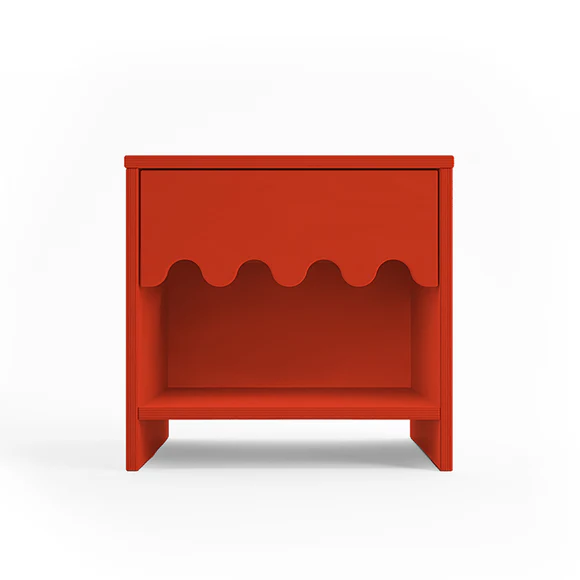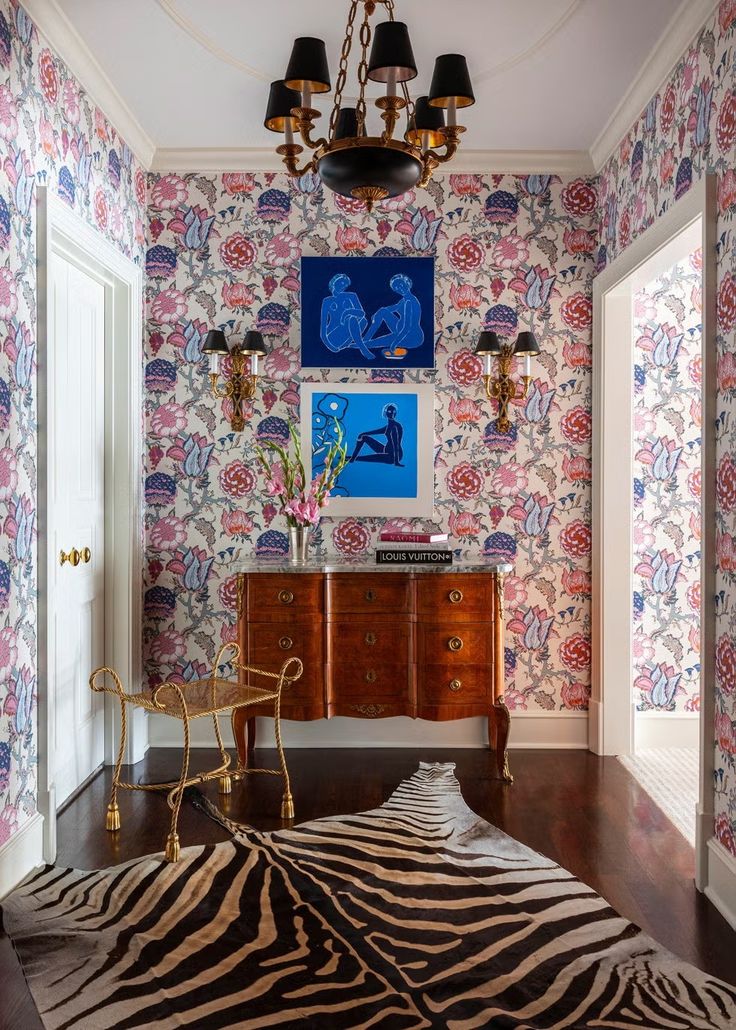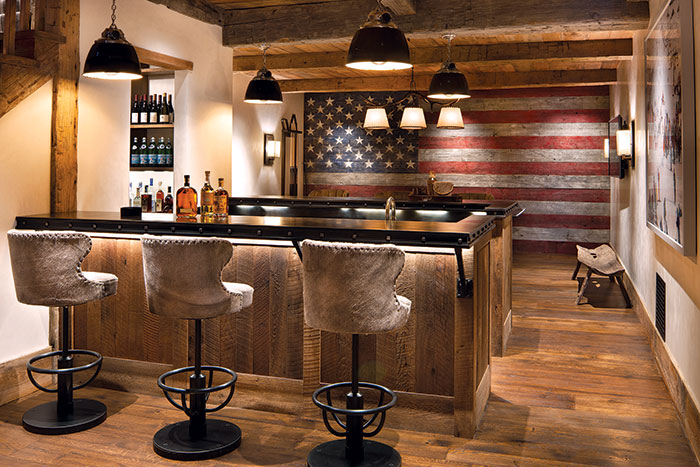Tobi Farley Helps Creatives Get Paid via Forbes
This article via Forbes is fantastic for any creative.
Tobi Farley has long been a force in the design industry but I love that she has turned her business into a platform to help other designers.
Creatives generally struggle with the business side but Tobi is out to change that. Enjoy this stellar advise.

Meet Tobi Fairley, an award-winning interior designer and business consultant.
NANCY NOLAN PHOTOGRAPHY
One of the greatest lies creative people have ever been told is that they can’t cash in on their talents. Sure, you can follow your passion to photograph weddings, stage homes, create stunning designs, and write brilliant prose… just brace for being “this close” to broke for the rest of your life.
Enter Tobi Fairley, an award-winning interior designer and business consultant who knows a thing or two about suffering from the “starving artist” syndrome. The first interior design jobs she interviewed for only paid $17,000 a year!
Today, Fairley runs two seven-figure businesses and has over a decade of experience helping creative professionals take their companies and lives to the next level. Her biggest dream is to help creative women become millionaires—and beyond—while having a great quality of life.
In this exclusive interview, Fairley shares her insights on how anyone can create the life they want—even if they’ve chosen to work in a traditionally low-paying creative field. All you need are floor-to-ceiling business smarts, a modern mindset, and wall-to-wall confidence.

“I thought I had to choose between making money and doing what I loved. But in my unhappiness, it … [+]JACOB SLATON PHOTOGRAPHY
Celinne Da Costa: Tell us about your background.
Tobi Fairley: One of my earliest memories from growing up in a tiny town in southern Arkansas was constantly rearranging my bedroom. After my parents went to sleep, I’d move everything around, wedging myself between the wall and the dresser for leverage so I could push the piece of furniture with my feet.
I’ve always had a passion for interior design. But when my parents told me, “you can be anything you want to be,” they meant a doctor, lawyer, or president of the United States. Not a creative. Today people binge-watch HGTV, but back then, there was no HGTV. There were hardly any interior designers, period. So I ended up getting an undergraduate degree in accounting because my father said it would always come in handy.
Just before graduation, I realized there was no way I could ever hold a job in accounting. I’m not a quitter but I was miserable. I could barely force myself to show up for class and when I did, I felt like I was suffocated by all the boring details. But I still loved decorating. Friends would call me to help them pick out furniture and I was creating custom window treatments for my own apartment. So I gathered the courage to present my parents with a business plan explaining the interior design industry, how it was a real thing, and how I planned on making money there instead.
Da Costa: What emboldened you to make that career change?
Fairley: I knew in my gut that I’d be miserable if I didn’t make the switch. With accounting, I was trying to force myself to be something that was respectable but not true to me. I thought I had to choose between making money and doing what I loved. But in my unhappiness, it finally hit me: Couldn’t I make money and do what I love? I was terrified that I might be wrong, but I knew I had to at least try and be willing to fail.
Once I enrolled in design school, I found out that I was a unicorn. There weren’t any interior designers with accounting degrees. Instead of separating those two parts of my life, I started to integrate them—getting an MBA along the way—and it was the key to me striking gold in the industry.
I’m not saying every creative needs an MBA. To be clear, I’ve never done my own books a day in my life. But getting somelevel of financial education—even a short online course—will give you confidence to make smart business moves while your creative skills will help you attract clients in your industry.

“Getting some level of financial education—even a short online course—will give you confidence to … [+]NANCY NOLAN PHOTOGRAPHY
Da Costa: What was the “ah-ha” moment that launched your career success?
Fairley: I interviewed for several poverty-level jobs paying $17,000 a year and thought, “Screw that. If I’m going to starve to death, I’ll do it while building my own business.” I opened a retail shop and built a roster of high-end clientele by reaching out to parents of friends, making over my home to get featured in local magazines, and doing charity projects.
My business made $375,000 in its first nine months. In my second year of business, we brought in $700,000—but I was bringing home less than $40,000 a year. I noticed really quickly that the business model for interior designers was broken.
Creatives are busy being creative, but they’re not doing the things that move the needle. They forget to bill or under charge clients, they don’t figure out how many clients they need to bring in to meet overhead. They’re trading dollars for hours and that’s the fastest path to burnout—I know because I was there. I had to take on more and more clients which spread me so thin. I was hiding from clients hoping they wouldn’t call me asking where their stuff was. I knew I had to try to rewrite the whole “trading dollars for hours” script before I burned out.
Da Costa: What did you do differently to rewrite the industry’s business model?
Fairley: I was one of the first people in the design industry to become a blogger and leverage social media—me, a girl from south Arkansas. I also hired business coaches to figure out how to charge higher fees. At the time, designers would sell products, not their services. They’d say, “If I sell you some sofas, you get me for free!” It was the worst idea in the world. “I’m not a sofa sales person!” I thought. These artists placed no value on their intellectual property.
Within a few years, I leapt from charging $100 per hour to charging a flat fee of $80,000 to design a house—which was unheard of at the time. There was no limit to what I could create and what I could charge when I was thinking about my services in a value-based way. Eventually I was running a multi-million dollar business.

“I knew there had to be a better way to live—and there was. First, through innovation.”
NANCY NOLAN PHOTOGRAPHY
Da Costa: But you still had trouble outrunning burnout. What happened?
Fairley: I found myself outwardly successful but inwardly unhappy. The first time it was because of an economic recession. People started pulling back from big projects—which were the machine that kept my business running. The second time was because of my business’s growing pains. I was no longer in my creative zone of genius. All of a sudden, I was managing twelve people and keeping seven-figure businesses thriving.
Everything that mattered most to me ended up on the bottom of my to-do list. I was working 14-hour days and weekends, my marriage was failing, my kid felt ignored, I was creatively depleted and I wondered if I was going to have a nervous breakdown. I remember crying and thinking, “Am I about to lose everything and everyone I’ve worked so hard for?”
I knew there had to be a better way to live—and there was. First, through innovation. I started teaching other creatives how to run profitable businesses. Second, by scalable business models. I created online courses and programs that didn’t need 100% of my attention.

“A lot of times creatives won’t charge their worth because they feel like they’re sticking a price … [+]JACOB SLATON PHOTOGRAPHY
Da Costa: Innovation, harnessing technology, and meeting people where they are has been key for you. How can other creatives better leverage their artistic skills for greater business profit?
Fairley: My ultimate business goal is to help as many creative women as possible become millionaires—and beyond—while having a great quality of life. Here’s how they can aspire financially higher.
1/ Forget what you think you know about business. You have to be willing to unlearn everything you’ve been taught about who you are (a starving artist) and what your industry is (low-paying) to be able to pivot to a plentiful place.
Shift your mindset to believe in things that have never been done before or seen before in your business. You can have all of the tools in the world, but if you don’t believe you can do something, they’re useless.
2/ Start valuing your own work. One of my clients told me about working for a neurosurgeon and said that picking out interiors isn’t the same as saving lives. It’s not. Doctors are most important in crisis moments. Artists are important to your daily existence.
There’s so much value in what creatives do, but some artists dumb it down or think it’s optional. In the moment you’re having a heart attack or a brain tumor, do you want the world’s best brain surgeon? For sure. But the other 364 days of the year, the work we do truly changes quality of life for people.
3/ Set up shop online. Now. People are buying luxury cars and diamonds online. All the evidence shows us that Americans are online for six and a half hours a day. Yet so many creatives are still waiting for the phone to ring or waiting for someone to walk into a gallery or a shop.
4/ Invest in your business. CEOs of thriving companies don’t think, “We only have $300 to run our business this week.” If you run your company on a shoestring budget, you’ll never have time to create, which is the main thing that makes you money. You’ll be wearing every hat except the one zone of genius hat that actually funds your business. That’s a treadmill you don’t want to get stuck on.
5/ Take some big chances. Of all the people in the world, we creatives take so many risks in our work, yet we want to take zero risk in our business. You can’t move with a turning tide if you’re not willing to be open to failure. Not ultimate failure, but small failures. It’s part of the path to success.
Ask yourself right now, What’s the biggest risk I could take with my business in the next month? Maybe it’s doing all your business online instead of in person. Or committing to a new niche business strategy. Or hiring a new team member or virtual assistant. Whatever you choose, look at the potential return on that investment. If it’s big enough, it’s time for you to get moving on it.
Be sure to check my other guides as I update them daily throughout the season as I discover the next best thing.
2019 Gift Guide for the Host / Hostess
2019 Gift Guide for The Little Ones
2019 Gift Guide for Holiday Decor
2019 Gift Guide for the Bibliophile
Shop my additional guides in the coming days.
See & shop my Lacefield Designs Textile & Pillow Collection.
Let’s get friendly on Facebook, Twitter, Pinterest, Tumblr & Instagram.
Please feel free to contact The English Room if you are interested in our interior design services.





